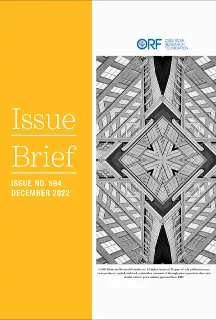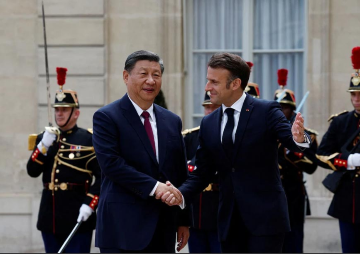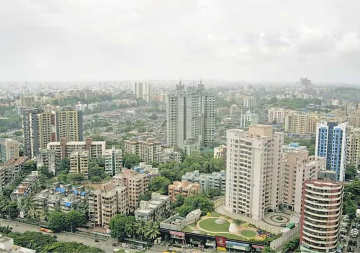Introduction
In June 2022, India introduced the Agnipath scheme to reform the recruitment and retirement mechanisms of its armed forces. Under the policy, youth between the ages of 17-and-a-half and 21 years will be recruited to the armed forces for four years of service. The scheme aims to improve the Indian military’s battle preparedness through merit-based recruitment and technology inductions. It also seeks to promote national integration and nation-building by developing a military ethos in Indian civil society.[1] Agnipath came into effect in September 2022.[2]
The announcement in June was met with immediate protests in many parts of the country, primarily over its four-year term limit and the lack of job security thereafter.[3] It also caused some uncertainty about the future of the Indian Army’s Gorkha regiments, which are made up of soldiers from Nepal’s Gorkha community. The Gorkha regiments have been an integral part of the Indian Army since 1947, when Nepal, India and the UK agreed[4] on the terms and conditions under which the Gorkha soldiers would serve in the British and Indian armies. While the tripartite agreement makes no mention of any coordination between the countries on the recruitment process,[5] Nepal urged India to postpone plans to recruit Gorkhas under the new Agnipath scheme until Nepali political parties could review the new scheme and arrive at a consensus.[6]
This brief explores the impact of the Agnipath scheme on the recruitment of Gorkha soldiers, as well as India-Nepal relations.
Surveying India-Nepal Relations
Cross-border migration and mobility due to geographical proximity were key features in the Indian subcontinent during British colonial rule. The British chose to keep an open border with Nepal to fulfil the economic and security interests of the East India Company (EIC). This meant the Nepali hill people could be recruited into the army without restrictions; the EIC could sell British and Indian manufactured goods easily in Nepal and beyond till Tibet; and the supply of raw materials (such as forest products, medicinal plants, herbs, and skins) from Nepal into India was unhindered.[7]
Independent India retained the open border with Nepal, and Article VII of the 1950 India-Nepal Treaty of Peace and Friendship grants, “on reciprocal basis, to the nationals of one country in the territory of the other the same privileges on matters of residence, ownership of property, participation in trade and commerce, movement and other privileges of a similar nature”.[8] As a result, even though there are check-posts at 26 locations along the India-Nepal border, people from either country can cross over from any point and as many times a day as they choose without any interrogation.[9]
Civilisational and economic factors have also shaped the bilateral relationship.[10] For instance, landlocked Nepal depends on India’s sea ports for its imports and exports,[11] and Hinduism has long bonded people in the two countries.[12]
India and Nepal cemented their diplomatic relations through the 1950 treaty, which, in addition to the free movement of people and goods between the countries, allows for collaboration in security matters. In 2014, both countries consented to revise specific provisions of the treaty, and the Eminent Persons’ Group (EPG)[a] was established in 2016 to evaluate India-Nepal relations and present recommendations. The EPG’s report was ready in 2018, but it is yet to be presented to either government or be made public. However, some in Nepal claim that India does not want to accept the report as the EPG has supposedly recommended the 1950 treaty be replaced.[13] The treaty was signed in the wake of the threat emanating from the Chinese takeover of Tibet, when the oligarchic Rana rule was on its last legs in Nepal. However, in recent years, the treaty provisions have caused resentment among royalists, leftists, democrats, and nationalists alike during different instances of Nepal’s dealings with India, as they often perceive these engagements as restricted by the treaty.[14]
India has typically had some role—whether direct or indirect—in the major political developments in Nepal. Promoting democracy is a key component of India’s neighbourhood policy.[15] As such, it supported the 1950 democratic movement that overthrew the Rana regime and backed the people’s movement in 1990 that restored multiparty democracy in Nepal. New Delhi also pursued a ‘twin pillar’ approach towards Kathmandu, accommodating the interests of the political parties and the monarchy. In 2006, following India’s political support for the people’s movement, Nepal dismantled its 240-year-old monarchy. Notably, the distinctive components of the bilateral relationship began to shift after this, with China presenting itself as an alternative partner and one key domestic development in Nepal making India an unpopular neighbour.
In 2015, Nepal promulgated a new constitution with the support of over two-thirds of the constituent assembly. However, a group of representatives from the Madhesi community were dissatisfied with some provisions in the new constitution, such as the division of states under the new citizenship bill.[16] The revised constitution also upset India’s interests and expectations, especially since it was promulgated without considering New Delhi’s concerns over the Madhesh province, which borders India.[17] The Madhesi leaders capitalised on India’s soft support by blocking border checkpoints and interrupting the entire supply system, which led to a massive humanitarian crisis in Nepal triggered by fuel and cooking gas shortages.[18] This situation dented India’s image in Nepal’s political and civilian spaces,[19] even as China increased its engagements through aid and assistance.
The demonetisation of specific Indian currency notes in 2016 caused a further strain in the bilateral relationship. Nepali banks, financial institutions, and individuals were said to hold over INR 7 billion (approximately US$108 million) of the banned Indian notes. Nepal has repeatedly urged India to permit the exchange of these notes, but there has been no progress.[20] This has further tarnished India’s image in Nepal.
Following the abrogation of Article 370 of the Indian constitution in 2019, which ended Jammu and Kashmir’s special status, India updated its political maps to include within itself the disputed territories[b],[21] with Nepal.[22] The long-standing border issue was aggravated when India opened a strategically important link road connecting the Lipulekh Pass (which Nepal claims) with Dharchula, both in the Indian state of Uttarakhand. According to Nepal, this “unilateral act” violates the two countries’ agreement on resolving the border issues.[23] In May 2020, Nepal responded by publishing a new political map that included the disputed territory, with India saying this was “artificial’ and “not acceptable to the government of India”.[24] Since then, neither side has attempted to resolve or mitigate the border dispute.
In 2022, India’s new Agnipath scheme created some tensions with Nepal. Where open borders once facilitated the recruitment, mobility, and migration of Gorkhas from Nepal—albeit contingent on their eligibility and capabilities—the features of Agnipath have raised many doubts over the future of the Indian Army’s Gorkha regiments.
India’s Gorkha Regiments and the Agnipath Impact
Before the arrival of the EIC, all Indian states had their own armies that were trained to conquer for territorial expansion. When the EIC defeated the Mughal emperor in 1765, English merchants devised a new administration by introducing a private army that was also authorised to wage war against the Indian states unwilling to cooperate.[25] British India made several efforts to institutionalise its colonial army through the evolution of the sahib-sepoy (master-soldier) relationship.[26] The British built the sepoy army in the first half of the nineteenth century by separating it from India’s caste-ridden society, and some scholars argue that this separation was a cause for the sepoy rebellion in 1857. Thus, after 1859, the imperialists made the army loyal by assimilating it into colonial society.[27] Other scholars opine that the main factor in enabling the British to structure a combat-effective and loyal army from the subcontinent’s manpower was managerial expertise, not an amalgamation of the army with India’s society or a superior weapons system. The English regimental structure enabled them to integrate sepoys into a professional combat organisation, contributing to their success. The regiment was a major determinant of the standing armies that emerged because of the western military revolution[c],[28]
Since the late nineteenth century and until the first decade of the twentieth century, the martial race theory—which held that only certain communities in the Indian subcontinent were capable of bearing arms due to biological and cultural superiority[29]—shaped the British military recruitment policy in India. This thinking perhaps drove Major-General David Ochterlony, the General of the EIC in British India, to be impressed by the Gorkha soldiers’ gallantry during the Anglo-Nepal War (1814-1816), and he agreed to offer safe passage to the Gorkha Commander Amar Singh Thapa on the condition that the British be allowed to recruit Gorkha soldiers.[30] This led to the establishment of a battalion of Gorkha soldiers (Nasiri Battalion) in April 1815,[31] even before the official end of the war in December 1816.[32] After the war and the dismantling of the land-military connection[d] (which had inspired Nepali hillmen to join the Gorkha Army to gain access to more land), rural Nepali men were lured by the military labour market as a means to overcome poverty.
Although Bhimsen Thapa, Nepal’s longest-serving prime minister, and a few Rana rulers placed restrictions on recruitment, British India succeeded in raising eight Gorkha regiments by 1885.[33] Still, Nepal’s defeat in the war paved the way for pro-British foreign policies there. Indeed, Jung Bahadur Rana rose to become the ruler of Nepal and founder of the Rana regime by establishing closer ties with British residency in Kathmandu and offering military assistance to the EIC during the 1857 Indian Army Revolt. In return, in 1860, Nepal was awarded territory in the Western plains—including Banke, Bardia, Kailali, and Kanchanpur[e]—that it had lost during the Anglo-Nepal War.
Later, Rana rulers also used Gorkha recruitment as “diplomatic currency”[34] to gain political support from Britain. Eventually, the Gorkha regiments became among the British Indian Army’s most decorated units. After India’s independence, the 1947 Tripartite Agreement between India, Nepal, and the UK guaranteed the continuation of Gorkha recruitment in the British and Indian armies. As per the agreement, four Gorkha regiments went to Britain, and six to independent India.
As of 2020, the Indian Army has seven Gorkha regiments, with roughly 32,000 Nepali nationals serving in these units.[35] However, India’s new military recruitment scheme poses some challenges to recruiting Nepali youth in the Gorkha regiments. The Agnipath scheme will change the way the armed services recruit for other ranks (personnel that are not commissioned officers). Personnel will be recruited for four years, after which only up to 25 percent of each batch of Agniveers (as those enlisted will be known) will be inducted into the regular ranks to serve for at least another 15 years. Importantly, these four years of service will not be counted in the pension benefits for those who become permanent recruits. In addition, all Agniveers will receive allowances such as those for risk and hardship, ration, dress, and travel, as well as compensation for death or disability while on duty.[36]
Notably, Gorkha soldiers have fought in India’s wars with China and Pakistan,[37] making significant contributions. For instance, during the 1962 Indo-Sino War, Gorkha soldiers are said to have rescued the Galwan Valley from China,[38] and although China used loudspeakers to urge them to withdraw support to India’s war,[39] Nepal did not call back its nationals due to the tripartite agreement. Additionally, of the about 4,000 prisoners of war on the Indian side, approximately 700 were Gorkha soldiers.[40]
As such, Gorkha recruitment into the Indian Army has significant geopolitical implications, especially since it goes against Nepal’s foreign policy of non-alignment. In that sense, India’s Agnipath scheme may relieve Nepal, or at least those political parties that view the Gorkha recruitment through its geopolitical significance. Debates on this dimension of the recruitment of Nepali nationals in the Indian Army mainly surface only during standoffs and scuffles between India and China in the Himalayan region. Still, many parties use the issue for their political gains. For example, Nepal’s communist and nationalist parties have often called for halting Gorkha recruitment, but only when they are in opposition. The Maoist rebels had included this as one of their 40 demands submitted to the government before launching an armed insurgency in 1996, but it ceased to be a political agenda after they joined mainstream politics in 2006.
Notably, the Gorkha recruitment issue was not part of the EPG’s mandate, and Nepal has yet to raise the issue with India officially. However, in May 2019, Nepal’s then-prime minister, K.P. Oli, discussed the matter of Gorkha recruitment with his British counterpart, Theresa May.[41] In February 2020, Nepal also proposed a review of the matter to the UK by dispatching a letter.[42]
Despite opposition from some political parties, Nepali youth from the indigenous hill communities in the western parts of the country are interested in these positions due to the pay, perks, and other social security benefits in the Indian Army. Currently, about 122,000 Gorkha pensioners in Nepal receive support from the Indian government.[43] But, under the Agnipath scheme, there will be fewer pensioners. Earlier, despite political objections, Nepal was not in a favourable socioeconomic position to halt such recruitment.[44] But now, Nepal’s political and social interests seem to have converged against the Agnipath scheme. The main opposition party, the Communist Party of Nepal (Unified Marxist–Leninist), has demanded a review of the 1947 tripartite agreement on the grounds that the Agnipath scheme violates the pact,[45] a sentiment shared by Nepali foreign policy and security experts. The Sher Bahadur Deuba administration is also concerned about the future of the Nepali youth after completing the four-year service (as mandated by Agnipath) and the possible impacts on Nepal’s internal security. Still, a political consensus is needed to diplomatically address and resolve the issue before India considers withdrawing the vacancies for Nepalis in the ongoing recruitment phase under the new scheme.[46]
While the fate of the Gorkha regiments remains uncertain, young Nepalis may turn to the Nepal Army despite its relatively low prestige, perks, and pay. The Nepali military ranks 119 on the 2022 Global Firepower Index (which assesses the military strengths of 142 counties) against the Indian military’s fourth position. While the size of India’s active personnel is approximately 1,450,000, Nepal’s active personnel stands at 95,000.[47] In terms of defence expenditures, airpower, land power, and naval power, the Indian Army is leagues ahead. But monetary factors will drive the choices of many Gorkhas. As such, although the Indian Army may offer higher pay and better perks, a lifetime of service in the Nepali Army—instead of only four years in the Indian Army under the Agnipath scheme—will have more significant long-term benefits. In addition, Nepali nationals in the Indian Army do not have a record of rising to the high ranks, but this will not be an issue in the Nepali Army.
Conclusion
Altering its military recruitment policy is undisputedly India’s prerogative, but this is certain to have a direct fallout on Nepal’s military labour migration to the Indian Army. Still, youth from Nepal’s financially marginalised sections may be interested in joining the Indian Army under Agnipath. However, more prominent Gorkha families will likely push their offspring to join the British or Nepali armies because they view military recruitment as a matter of prestige and not from the lens of monetary gain.
Nepal will likely announce a more detailed response to the Agnipath scheme once a new government is formed following the late November 2022 elections. While the implementation of the scheme has revived debates over the provisions in the 1947 tripartite agreement, Nepal’s new government must consider the various factors associated with Gorkha recruitment, including social, economic, political, and diplomatic issues. Of key significance will be how the major political stakeholders strike a balance between the interests of the Nepali state in halting the recruitment of its nationals in foreign armies, and the interests and aspirations of its youth who are willing to serve in the Indian Army for better livelihoods.
Endnotes
[a] The group had four members from each country. From Nepal: former Foreign Minister Bheg Bahadur Thapa, former Ambassador to India Nilambar Acharya, Suryanath Upadhyay, the former secretary of government of Nepal, and Rajan Bhattarai, the former advisor to the prime minister. From India: current Maharashtra Governor Bhagat Singh Koshyari, academic Mahendra P. Lama, former diplomat Jayanta Prasad, and the late Bhuwan Chandra Upreti, an expert on India-Nepal relations.
[b] The map also indicated that India’s borders included the contentious ‘Kalapani’ region of the Greater Himalayas. According to the map, the location is a part of Uttarakhand’s Pithoragarh district.
[c] The so-called military revolution includes four major factors: Warfare transitioned from being labour-intensive to being capital-intensive due to the mass production of bronze artillery in the late fifteenth century; sailing craft with the ability to travel great distances and fire deadly broadsides; the 1520s saw the perfecting of artillery fortresses, which spread from Italy to Europe and European colonies abroad; the Dutch Army introduced infantry drill and volleyball fire in the 1590s.
[d] As per an old Nepalese military tradition, soldiers were awarded lands as payment for serving in the army or showcasing bravery. This trend ended sometime after the Anglo-Nepal war.
[e] The territories later came to be known as ‘Naya Muluk’.
[1] Indian Army, Government of India, “Agnipath Scheme”.
[2] Sameer Patil and Vivek Mishra, “Agnipath Military Recruitment Scheme: Embracing the Global Practice for the Indian Context,” Observer Research Foundation, November 2, 2022.
[3] “Agnipath: India strike over controversial army hiring plan,” BBC News, June 20, 2022.
[4] British Parliament, Gurkha Troops (Agreement), 1947.
[5] Gopal Gurung, “Agnipath and Gorkha recruits: Kathmandu must rise above politics, think of its youth,” The Indian Express, August 28, 2022.
[6] “Nepal urges India to suspend recruitment of Gorkha soldiers under Agnipath scheme,” Deccan Herald, August 26, 2022.
[7] Vidya B. S. Kansakar, Nepal-India Open Border: Prospects, Problems and Challenges, Center for the Study of Labour and Mobility, 2003.
[8] Ministry of External Affairs, Government of India, Treaty of Peace and Friendship, 1950.
[9] Buddhi Narayan Shrestha, “Cross Border Mobility between Nepal and India” (Paper presented in the International Boundary Conference entitled ‘Border Regions in Transition (BRIT-xiv)’ held in Arras and Lille in France and Mons in Belgium from 4 to 7 November 2014).
[10] Lok Raj Baral, “India-Nepal Relations: Continuity and Change,” Asian Survey 32:9, (1992): 815–29.
[11] Dalip Singh, “Why India Is a More Cost-Effective Trade Option for Kathmandu,” The Economic Times, June 11, 2020.
[12] Toffin Gérard, “The Propagation of a Hindu Sect in India and Nepal: The Krishna-Praṇāmī Sampradāy,” South Asia: Journal of South Asian Studies, 34:1 (2011): 1-30.
[13] Anil Giri, “Ignored for Three Years, EPG Report Is Losing Its Relevance,” The Kathmandu Post, August 5, 2021.
[14] Nayanima Basu, “What the India-Nepal Peace Treaty Is, and Why Nepal Has Problems with It,” The Print, January 24, 2021.
[15] S.D. Muni, India’s Foreign Policy (Delhi: Cambridge University Press, 2009).
[16] Julia Strasheim and Subindra Bogati, “Nepal’s quest for federalism: a driver of new violence,” German Institute of Global Affairs and Area Studies, (working paper, 2016).
[17] Shubhajit Roy, “Make Seven Changes to Your Constitution: India Tells Nepal,” The Indian Express, September 24, 2015.
[18] Saroj K. Aryal, “Post-2015 India-Nepal Relations and China Factor in South Asia,” Politeja 76 (2022): 285-303.
[19] Aryal, “Post-2015 India-Nepal Relations and China Factor in South Asia”
[20] Sumesh Shiwakoty, “Nearly 3 Years Later, Nepal Contends with the Consequences of Indian Demonetization,” The Diplomat, September 3, 2019.
[21] Sohini Nayak, “India and Nepal’s Kalapani Border Dispute: An Explainer,” Observer Research Foundation, April 29, 2020.
[22] Saroj Kumar Aryal and Simant Shankar Bharti, “Comparison of Indian and Nepalese media on ‘Nepal’s New Political Map’,” Asian Politics & Policy, 14:1 (2022): 134-138,
[23] “Nepal Objects to India’s ‘Unilateral’ Opening of Link Road to Kailash Mansarovar,” The Print, May 9, 2020.
[24] Ministry of External Affairs, Government of India, Media Queries Response, 2020.
[25] William Dalrymple, The Anarchy (London: Bloomsbury Publishing, 2019).
[26] Kaushik Roy, “The historiography of the colonial Indian army,” Studies in History 12:2 (1996): 255-273.
[27] Stephen P. Rosen, Societies and military power: India and its armies (New York: Cornell University Press, 1996).
[28] Kaushik Roy, “The construction of regiments in the Indian Army: 1859-1913,” War in History, 8, no. 2 (2001): 127-148.
[29] Kaushik Roy, “Race and Recruitment in the Indian Army: 1880– 1918,” Modern Asian Studies, 47, no. 4 (2013): 1310–47.
[30] Prem Singh Basnyat, “How Patriotic Was Bada Kaji Amar Singh Thapa?” My Republica, August 22, 2020.
[31] Harold James and Denis Sheil-Small, The Gurkhas (Leicestershire: Macdonald, 1965).
[32] Lionel Caplan, Warrior Gentlemen (New York: Berghahn Books, 1995).
[33] Sachin Giri, “Untold History of Gurkha Brigade,” Nepal Revives, February 10, 2020.
[34] Mary des Chene, “Relic of Empire: A Cultural History of the Gurkhas, 1815-1987,” (PhD dissertation, Stanford University, 1991).
[35] Atul Aneja, “Know the Gurkha regiment, pillar of India’s security for decades,” May 30, 2020, The Hindu.
[36] Laxman K. Behera, and Vinay Kaushal, “The Case for Agnipath,” Observer Research Foundation, August 9, 2022.
[37] Gaurav Bhattarai, Nepal between China and India: Difficulty of being Neutral, (London: Palgrave Macmillan, 2022).
[38] Pratistha Rijal, “Gorkhas on the Frontline between India and China,” Nepali Times, June 29, 2020.
[39] C. S. Thapa, “Impact of cut in Gurkha recruitment into Indian army by Nepal,” Salute, 10:6, (Feb/March 2018).
[40] “Post-1962, China Treated Gorkha POW’s Better, Indoctrinated Them: Research,” Hindustan Times, December 1, 2014.
[41] Anil Giri, “Oli Proposed a Review of the 1947 Tripartite Pact in Meeting with Theresa May, Foreign Minister Says.” The Kathmandu Post, June 13, 2019.
[42] Anil Giri, “Nepal officially proposes a review of the 1947 tripartite agreement with Britain on Gurkha soldiers,” The Kathmandu Post, February 17, 2020.
[43] Embassy of India in Nepal, “About Defence”.
[44] Kamal R. S. Rathaur, “British Gurkha Recruitment: A Historical Perspective,” Voice of History, 16:2, (2001):19-24.
[45] Anita Shrestha, “India’s trial by fire for soldiers from Nepal,” Nepali Times, August 24, 2022.
[46] “Vacancies for Nepalese under Agnipath may be withdrawn for time being if Kathmandu does not act soon: Army chief,” Times of India, September 15, 2022.
[47] “Comparison of India and Nepal Military Strength,” Global Firepower, 2022.
The views expressed above belong to the author(s). ORF research and analyses now available on Telegram! Click here to access our curated content — blogs, longforms and interviews.

 PDF Download
PDF Download



 PREV
PREV



